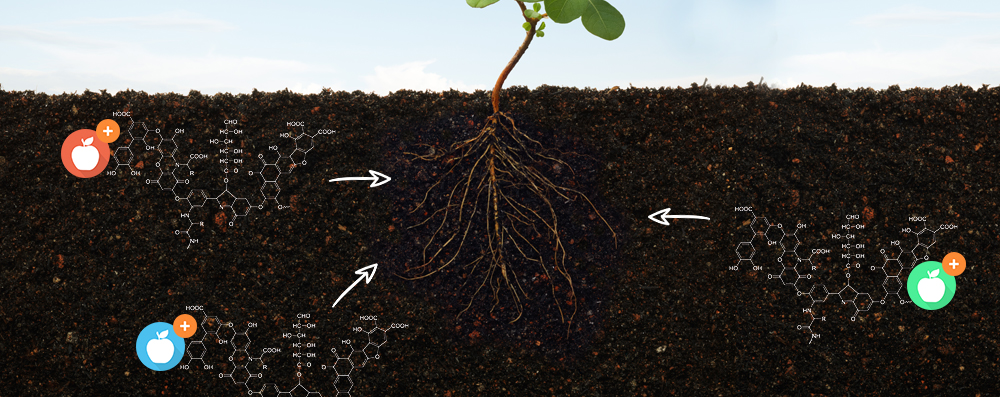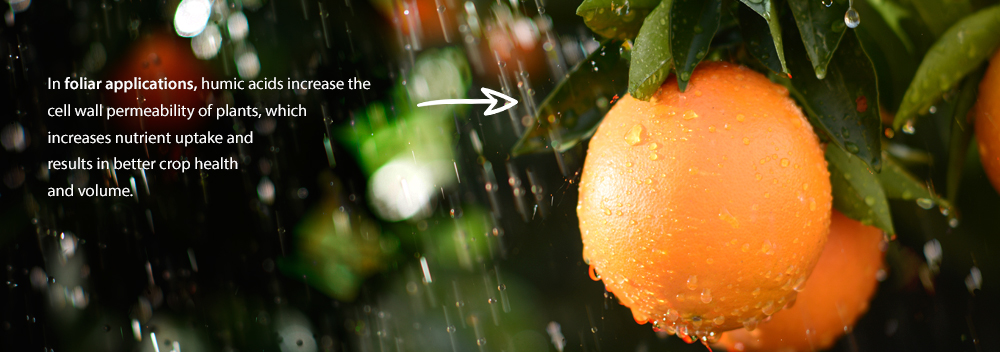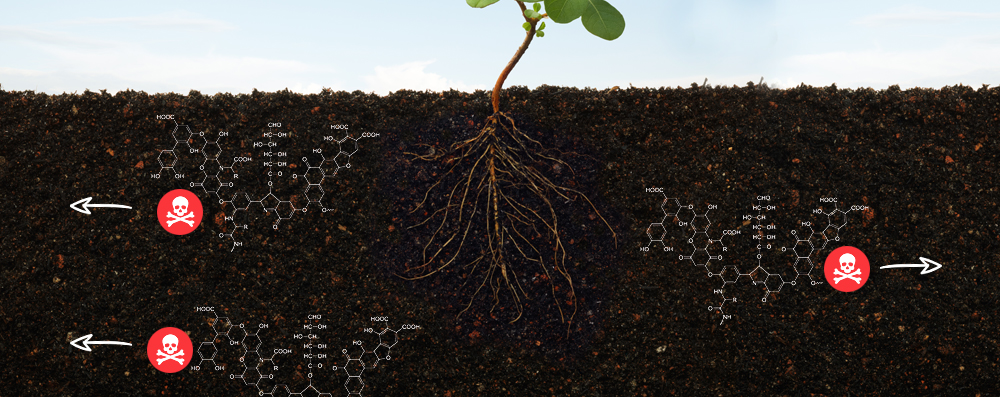The Top 5 Benefits of Humic Acid
For centuries, humic acids have proven to be highly beneficial for farmers. The list of benefits is long, and at times it can be confusing. So here’s our simple list of the top 5 benefits of humic acid.
1. Increased Nutrient Uptake
The most prominent and well-known benefit of humic (and fulvic) acids are how they increase nutrient uptake in plants. This is why they make such an excellent soil amendment, and it’s why they pair so wonderfully with fertilizers. Without humic acids present, some of the nutrients provided by fertilizers become inaccessible to plants, so money is lost and plant health suffers. Thus, humic acids are vital for both the health of plants and for growers’ economic well-being.
There are two methods by which humic acids increase nutrient uptake—through foliar and soil applications.
In Soil Applications:
Humic acids make nutrients more available in soil that might not otherwise be available. How exactly? It starts with the organic composition of the acids. Humic acids are naturally oxidized, which gives them a net negative charge. Thus, positive ions, also known as “cations”, are attracted to these big molecules and bind to them. This “cation exchange capacity” is a unique and highly beneficial feature of humic acids. And many of the nutrients that plants need—such as Magnesium, Calcium, Iron, and other trace minerals—are positively charged. So in the presence of humic acids, these nutrients unlock from the soil and bind to humic acids. Then they can then be transferred next to the root system of the plant.
The root systems are also negatively charged, at a stronger negative charge than the humic acid. So the positive ions bound to the humic acid release for uptake into the plant. Without this vital system, many nutrients would remain locked in soil and unavailable to plants they’re meant to fertilize.
In Foliar Applications:
Humic acids aren’t just beneficial in soil applications. They’re also useful in foliar applications, paired with fulvic acids, which are shorter chain organic molecules. Humic acids are vital for increasing cell wall permeability in plants. When cell membranes become more permeable, nutrients can more easily enter through the plant (often carried by fulvic acids, which are particularly good chelators.)
2. Decreased Toxins
Humic acids don’t just make nutrients more available. They also chelate harmful toxins in the soil, preventing them from entering the plant. This benefit is particularly important in today’s soil environments, where countless toxins have been introduced over many years, namely pesticides and heavy metals. These pollutants degrade the soil quality, and without proper remediation, they continue to degrade crop health and volume. These toxic molecules are captured by humic molecules and locked up. Unlike nutrients, they’re not uptaken by the plants, and eventually they’re flushed away. This vital process keeps plants healthier today’s increasingly challenging growing environments.
3. Increased Water Retention
Humic acids have the very unique ability to increase water retention in soils. In the world’s changing climate, this is becoming more important as ecosystems become strained. It’s also vital for sandy, arid, and low-clay soils.
How does it happen? The negative charge of humic acids attracts positive ions, or cations, which stick to the humic molecule. These cations, in the presence of water molecules, move slightly away from the humic molecule and attach loosely to the oxygen end of water molecules. The hydrogen ends of those water molecules then attach to the hydrogen ends of other water molecules. This effect reduces water evaporation by up to 30%.
Ready for results?
Get 10% off your first order of our premium humic acid products.
4. Improved Microbial Growth
One of the most noticeable and impactful benefits of humic acids is their impact on microbial populations on soil. Scientists are increasingly realizing how important a healthy microbiome is to soil environments. And many bacteria populations have been decimated by poor soils and pesticides, so it’s imperative that they be restored. Humic acids aid the growth of microbial populations in two primary ways. First, they provide a source of carbon which serves as a food source for microbes. Secondly, due to their large size, they provide a source for microflora to colonize. So essentially humic acids provide food and shelter to beneficial microbes, which explains why microbial populations flourish in the presence of humic acids.
5. Better Overall Soil Structure
Although humic acid has a net negative charge, it carries both positive and negative charges. And it has a very large molecular size. Because of these properties, humic acids are able to bond to all soil particles, which creates necessary space for microbes and healthy root growth. This is especially noticeable in high-clay and compacted soils, where soil particles are bound tightly together. Humic molecules are even capable of standing clay particles on end, which allows more space and water penetration. Further, they remove salts from clay, which restores a negative charge from the clay particles, forcing them apart.
These five primary benefits lead to all sorts of positive effects in plants, including better health, more resistance to stress, larger size and volume, and higher fruit production. In short, growers can’t afford to continue a fertility program that doesn’t include humic acids. Need more info about our premium humic acid products? Get in touch!








